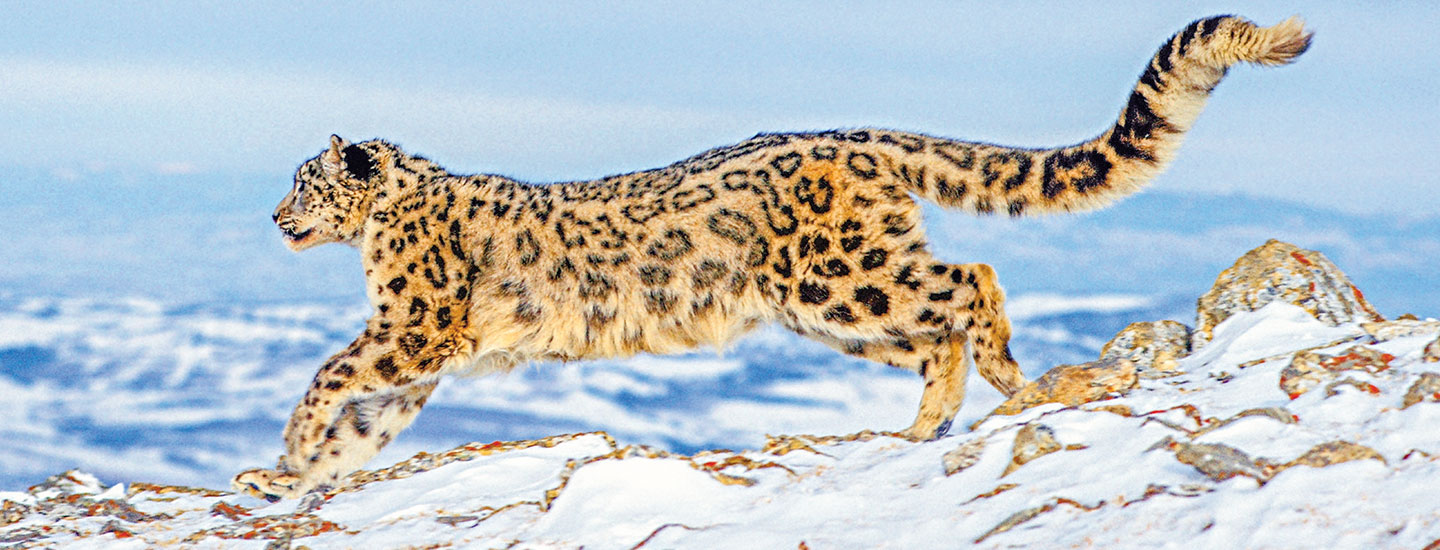Seeing a wild snow leopard in person is something you never forget. Koustubh Sharma was 3 feet away when he first encountered one. Big, round eyes looked at him in surprise. “He turned away and quietly fled up the mountain like a ribbon,” says Sharma. He’s a field biologist for the Snow Leopard Trust, a nonprofit organization devoted to saving the endangered species.
Snow leopards try to avoid humans as much as possible. It’s hard to spot them because their black-spotted fur blends into rocky backgrounds, making a perfect camouflage. Plus, they live at high altitudes in remote areas of Central and South Asia.
So how can scientists like Sharma study these elusive creatures? They spend weeks camping and trekking through mountains. Using technology and math, scientists track the snow leopards and gather information about them (see Studying Snow Leopards).
Snow leopards are striking animals. Biologist Koustubh Sharma still remembers the first time he saw one in the wild. The animal was only was 3 feet away from Sharma. He saw the surprise in its big, round eyes. “He turned away and quietly fled up the mountain,” says Sharma. Sharma works for the Snow Leopard Trust, a nonprofit organization that works to save the endangered species.
Snow leopards try to avoid humans as much as possible. They live in the mountains in remote parts of Central and South Asia. Their camouflaged coat makes them hard to spot in these rocky areas. The black spots on their fur help them blend in.
So how can scientists like Sharma study these sneaky creatures? They spend weeks hiking through mountains where the leopards live. They use technology and math to track the animals and learn about them (see Studying Snow Leopards).

